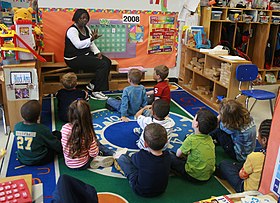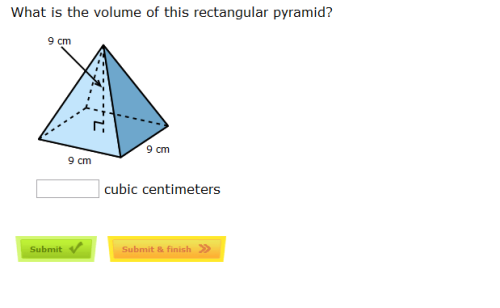
There have been many studies on the topic of games and learning. This article will focus on the benefits and problems of games in learning. This article will focus on the benefits of simulations in learning as well as the issues associated with games. Games can improve learning in many different ways. Additionally, games can make learning more enjoyable and more fun.
Results of studies on games in learning
Before using game-based learning for learning, there are a few things you should remember. Research should focus on the duration of gaming. Studies also showed that gaming is more efficient than classroom instruction. Gaming offers more interaction and feedback. It also gives students a greater sense of control. Good assessment practices are essential for effective gaming in education. A review of existing research has found that gaming improves student learning outcomes.
Clark led a team which published 68 studies in a metaanalysis of digital learning and games. These studies included comparisons between game and nongame conditions as well as evaluations of augmenting existing educational games with new features that could enhance learning outcomes. The meta-analysis showed the importance and impact of game design on learning outcomes. Although some results were inconsistent across groups, the researchers concluded games are an effective tool for learning improvement.

Problems with games in learning
Many games allow students to succeed in a safe environment. Games give students the opportunity to learn from past mistakes, and make failures fun. Students can crash their cars in Burnout Paradise to earn points for spectacular crashes. Learning is not complete without failure, and Burnout allows you to feel insecure. Students can also learn from games and experience repeated failures.
Although games are increasingly popular in classrooms, they present unique challenges. For example, the current learning measures are not compatible with the games. The game designers will need to make the games more schoollike and choose the appropriate genre. Games may not be as educational as teachers would prefer, but changing them to be more academic-sounding can help overcome this barrier. Teachers and students might feel intimidated by games and the cost of integrating them into formal classrooms.
Benefits of games in learning
Studies have shown that students who engage with educational games retain information better than those who study only from textbooks. These games improve student engagement as well. They also encourage positive emotions and problem-solving skills. They are also known to enhance cognitive functions and reverse certain aging-related brain conditions. You can use games to help students learn how to make complex decisions.
The role-playing elements of many games promote creativity and encourage students to explore different perspectives and ways of thinking. The role-playing elements of many games can help students improve their agency and problem solving skills. They also foster relationships. Ex-tutors and assistant professors of the University of Northern Colorado claim that role-playing encourages students to think out of the box. These games encourage creativity because of their immersive nature.

Simulations in Learning: The Problems
Simulating in the classroom can lead to many problems. For example, students can feel uncertain about the outcome of a scenario when they are not aware of its implications. Simulated situations are more likely to elicit frustration when students don't know what to do. Simulations should have a clear sense of reality and be based on well-defined outcomes. Students should be able and willing to cooperate with others.
Another issue is that students can get too involved and forget the basic concepts. Teachers should be prepared for any difficulties that might arise and help students return to their main learning objectives. Even though it is recommended to use the best students to perform the roles in the class, they may not always be interested. A professional tutor can help you decide whether or not to use simulations in the classroom.
FAQ
How do I apply to college?
There are many options for applying to college. Start by speaking with your high school admissions counselor. Online applications are popular among high schools. Contact local colleges for more information. Many colleges will accept applications through the Internet via their website.
If you apply by mail, you will need fill out an application and to send copies of all necessary documents. You can use the personal statement to tell why you would like to study at this school and what its benefits are to you. It is also helpful for admissions committee members to understand your goals, motivations, and values.
You can download sample essays from this website.
What do you need to become a teacher in early childhood?
The first step is to decide if you are interested in a career as an early childhood educator. If so, then you will need to get your bachelor's degree. Some states require that students have a master's level degree.
You will also likely need to attend classes during the summer months. These courses will cover subjects such as curriculum development and pedagogy (the art or teaching).
Many colleges offer associate degrees that lead directly to a teaching certificate.
Some schools offer certificates, while others offer bachelor's and master's degrees. However, some schools only offer diplomas.
Additional training may not be necessary if you intend to teach at home.
What are some possible ways to receive scholarships?
Scholarships are grants awarded to help pay for college expenses. There are many kinds of scholarships. There are many types of scholarships available.
-
Federal Grants
-
State Grants
-
Student Loans
-
Work Study Programmes
-
Financial Aid
Federal grants come directly from the U.S. government. Federal grants usually require applicants to meet specific requirements. You will need to prove financial need.
Individual states offer state grants. These funds are offered by individual states based on financial need. Others offer money for specific purposes.
Banks and other lending agencies can provide student loans. Students borrow money to pay tuition and other living expenses.
Work-study programs are designed to encourage employers to hire qualified students. Employers must pay at least the minimum wage to their employees.
Financial aid allows low-income families to afford college by paying for all or part of their tuition costs.
Statistics
- Think of the rhetorical power of nineteenth-century abolitionist Harriet Beecher Stowe, Martin Luther King, Jr., or Occupy Wall Street activists with their rallying cry of “we are the 99 percent.” (bostonreview.net)
- These institutions can vary according to different contexts.[83] (en.wikipedia.org)
- Data from the Department of Education reveal that, among 2008 college graduates, 92.8 percent of humanities majors have voted at least once since finishing school. (bostonreview.net)
- Among STEM majors, that number is 83.5 percent. (bostonreview.net)
- “Children of homeowners are 116% more likely to graduate from college than children of renters of the same age, race, and income. (habitatbroward.org)
External Links
How To
How to apply for homeschooling
Homeschooling is a method of teaching children subjects at home. This includes reading books and watching videos, performing exercises, listening to music, and learning through various methods. It is considered one of the most effective ways of learning because it enables students to learn things at their own pace and develop skills like problem-solving, critical thinking, creativity, self-discipline, communication, and social skills.
Many people want their children to be educated at home. This is especially true for working parents. If this is the case, they have two options: homeschooling or a private school. This allows them to spend their time and energy on education instead of worrying about whether someone will be available to look after their children.
Homeschooling offers many benefits. One of them is the ability for students to develop critical thinking and creative skills. Another is their ability increase their knowledge and language skills.
Homeschooling's main purpose is to give children quality education so that they can be successful adults. However, certain requirements must be fulfilled before starting homeschooling. You must determine if your child is eligible for public or private school. It is important to choose the right curriculum for homeschooling. There are many kinds of curricula on the internet that you can choose depending on what your level of knowledge, budget, and preference is. There are many options, including Waldorf, Montessori, Waldorf and Reggio Emilia. Charlotte Mason, unschooling and natural learning. A second requirement is that you ensure you have the right resources in order to teach your child. This means purchasing textbooks, educational materials, computers, electronic devices, toys, games, art supplies, musical instruments, etc. These items may be bought online, or purchased in local stores.
Once you have completed these steps, you can apply to become a homeschooling mom. The best way to do this is to contact your state department of education and ask for guidance. They will help with the forms and give you advice on how you can start homeschooling.